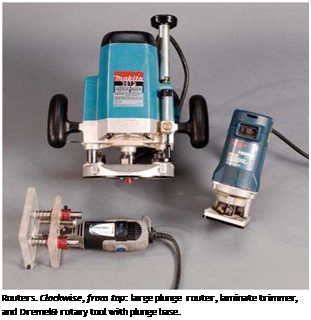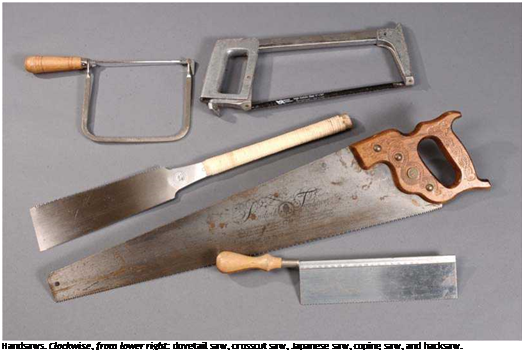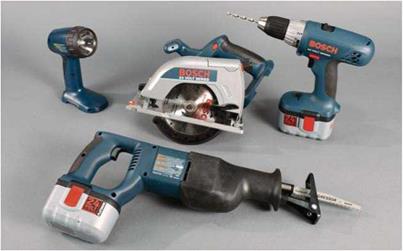HANDSAWS
The following inexpensive handsaws are handy to have:
Coping saws cut curves into any thin stock, although their primary use is coping trim so intersecting pieces fit snugly. They take both metal – and wood-cutting blades.
A hacksaw is most often used to cut metal, especially bolts or nails. Sawblades will last longer if you use the full length of the blade.
A Japanese saw cuts on the pull stroke. Its thin, flexible blade is perfect for cutting flush shims and other thin stock. Most are two-sided, with rip and crosscut teeth.
A handsaw is still worth having in your toolbox, preferably a 10-pt. crosscut saw. Even if you depend primarily on a circular saw, a handsaw is handy for finishing cuts that don’t go all the way through a rafter or joist.
A dovetail saw makes clean crosscuts in small molding, doorstops, and casing beads.
A keyhole saw can cut holes in drywall for electrical boxes, without predrilling.
Full-size routers are probably too expensive for casual remodelers, but trim routers and rotary tools are versatile and reasonably priced. Safety goggles are a must with any router.

 |
Laminate trimmers are also called trim routers. In addition to trimming laminate edges, these lightweight routers are great for mortising door hinges and strike plates.
![]()



Plunge routers can lower to precise depths in the middle of a workpiece, making them ideal for wood joinery, edge shaping, mortising door hinges, and so on.
Dremel™, variable-speed rotary tools can
dislodge tired tile grout and remove stubborn
paint from beaded or ornate woodwork. There are hundreds of specialized accessories for this tool.






Leave a reply